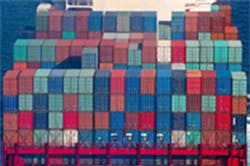Simplifying the 49 CFR Shipping Rules
In order to ascertain how shippers of hazardous materials are complying with the complex sets of regulations they face Labelmaster conducted a survey.
Among the findings, some 56% percent of respondents agreed with the statement “…even Einstein would have difficulty understanding 49 CFR shipping requirements,” while 59% noted the inherent challenge of simply keeping pace with the changes and modifications in regulations as time passes.
Whether it’s the US 49 CFR Parts 100 – 185 that govern DG shipments here in the U.S., the ICAO TI and its translated iterations, the IATA DGR or AIR Shipper, the IMDG Code for ocean shipping, or any one of the large number of foreign equivalents to the 49 CFR like the EU ADR or the Canada TDGR, all of these publications feature sufficient small text and large lists and revisions that may at first seem overwhelmingly complicated to use to the uninitiated eye. However, this is not really the case. Regardless of which set of shipping regulations one is following, these guidelines are recommended:
Determine the correct set of rules to work with.
In the U.S. and if shipping by ground, the right set of rules is almost certainly the 49 CFR Parts 100 – 185. This is the law of our land for shipping dangerous goods.
When shipping by air, the ICAO TI or one of its derivations is most often the correct choice. Note that many air carriers have their own specific rules, called “variations” or “limitations,” that often exceed the otherwise stated regulatory requirements for the particular dangerous good you are shipping. You must be aware of and adhere to these rules when shipping by this mode.
Some domestic air carriers also operate solely under the rules found in the 49 CFR, although this is unusual except in limited application like Gulf of Mexico oil field services and the Alaskan Bush.
If shipping by an ocean carrier, it’s likely that the IMDG Code is your guide, although, here again, shippers using only internal US waterways often use only the 49 CFR. In any case, remember that as the U.S. law, the 49 CFR Parts 100 – 185 always has primacy and often will affect or modify the regulations found in the other (internationally used) texts. In these cases, such modifications usually appear as “state variations” or possibly “Special Provisions” which will notify you that such a circumstance exists. Always check for these.
Be sure that everyone involved with shipping has the specified training.
In the U.S., 49 CFR 172.700 – 704 specifies the most basic mandatory training required for shippers of dangerous goods. The other sets of regulations have their own requirements – one should be trained for both the type and level of expertise required for the dangerous goods you ship and the modes of transport you intend to use. Remember to document your training because any competent auditor will ask for these records.
For more recommendations see New Equipment Digest.
New Equipment digest is a companion site to MH&L within Penton’s manufacturing and supply chain group.
